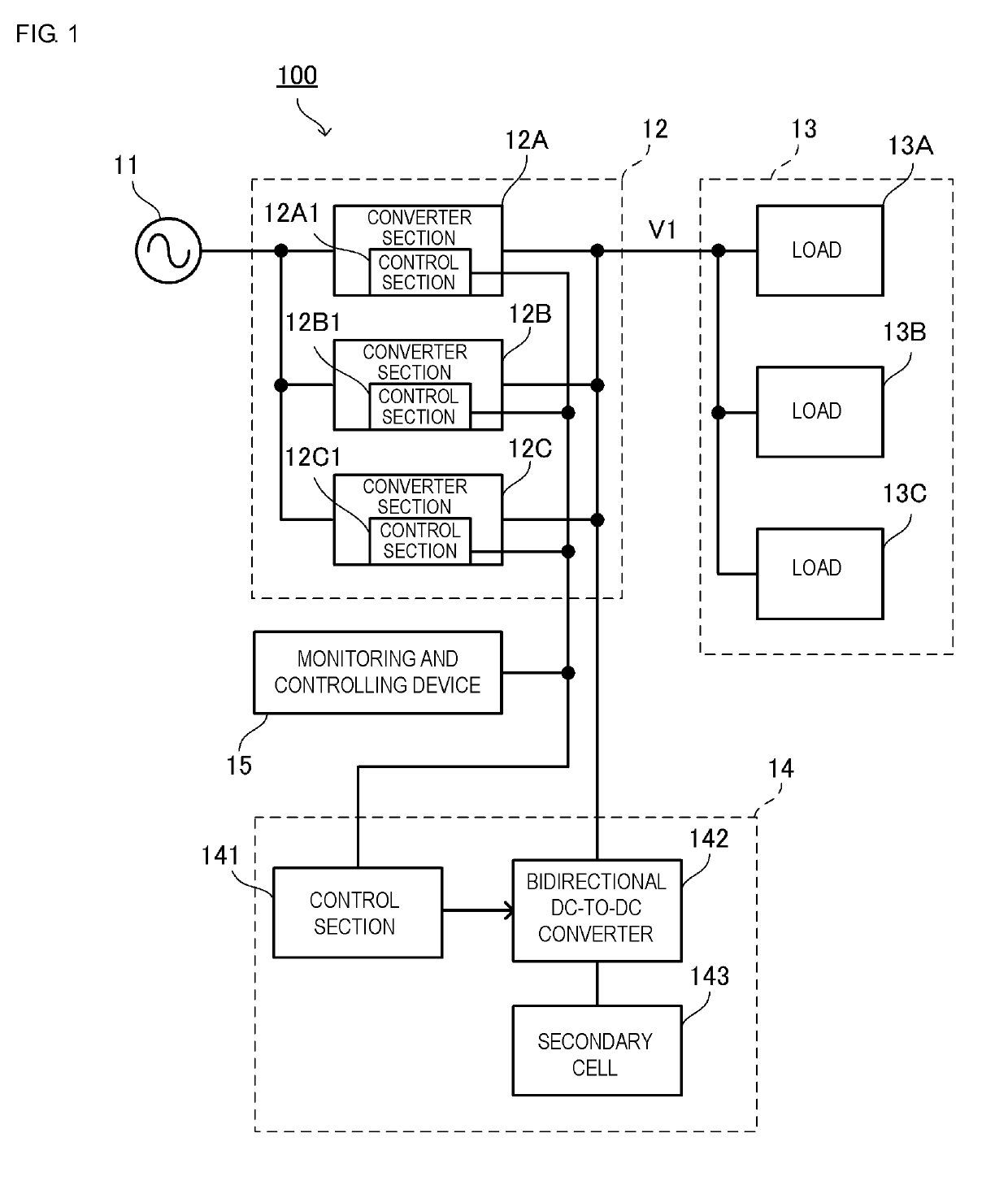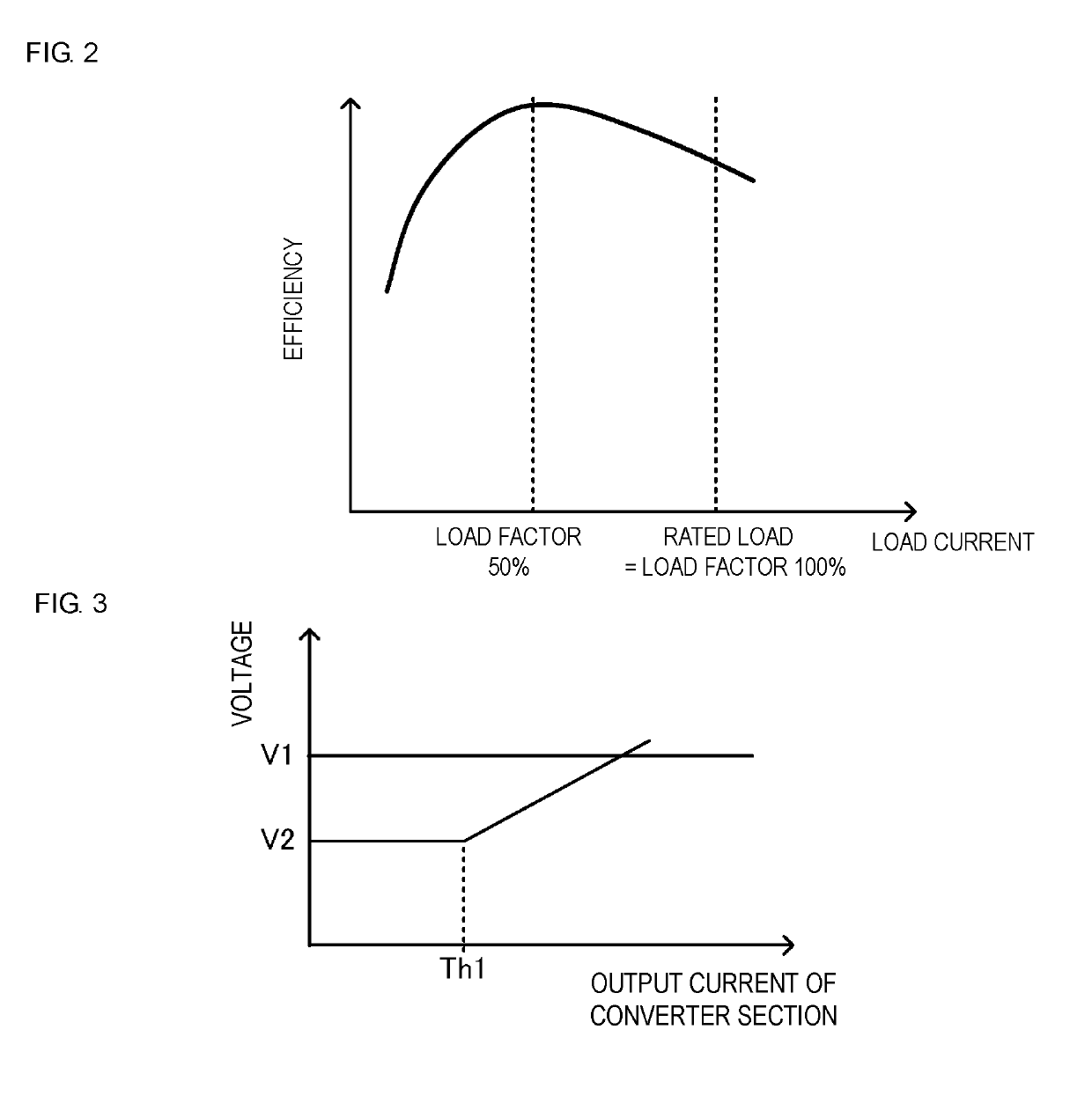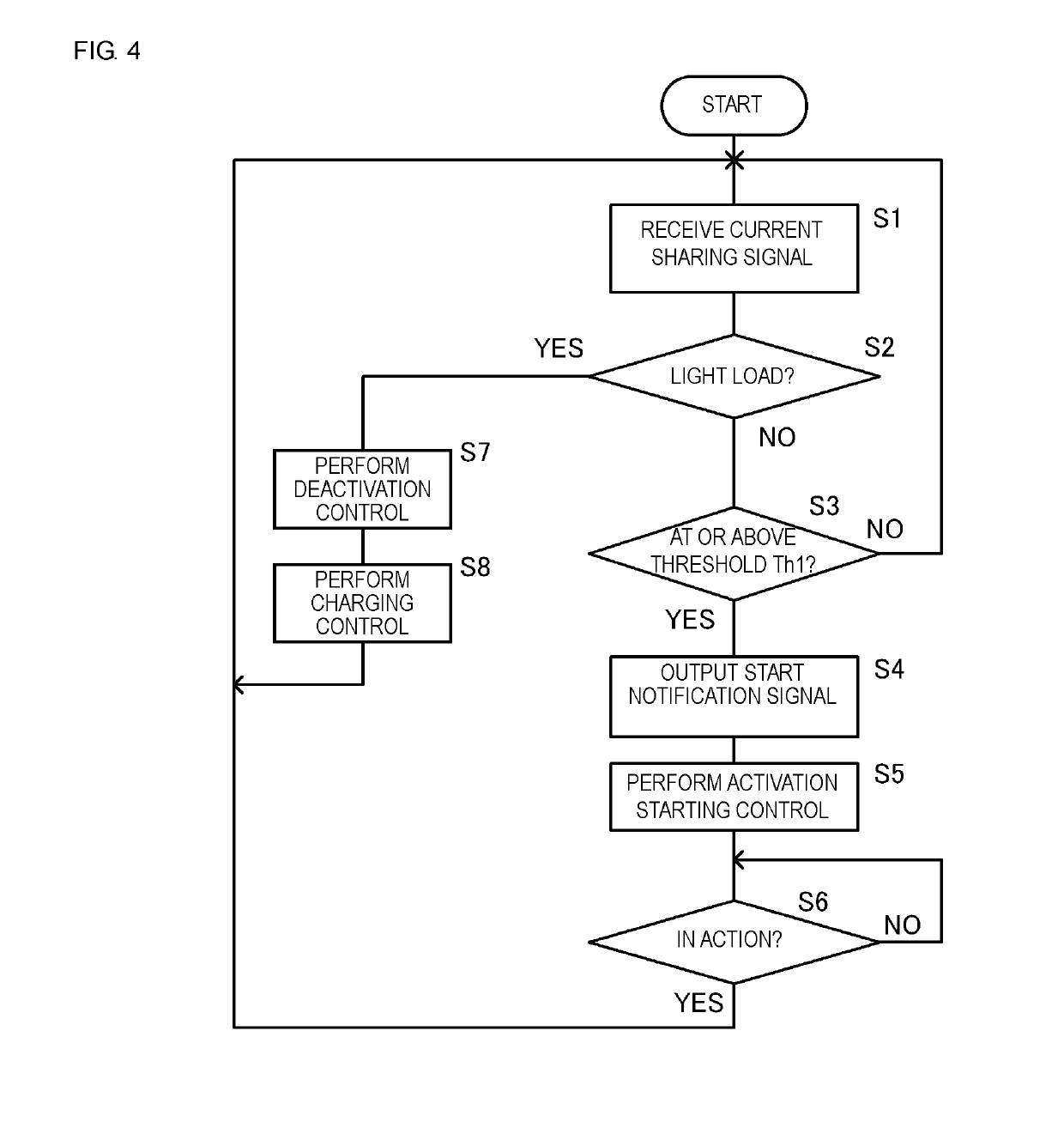Power supply system
a power supply system and power supply technology, applied in the field of power supply systems, can solve the problems of unstable operation, power supply device may not support the sudden change of load current, inability to quickly activate, etc., and achieve the effect of reducing the number of converters deactivated
- Summary
- Abstract
- Description
- Claims
- Application Information
AI Technical Summary
Benefits of technology
Problems solved by technology
Method used
Image
Examples
first exemplary embodiment
[0033]FIG. 1 is a block diagram of a power supply system 100 according to the present embodiment.
[0034]The power supply system 100 includes a commercial power supply 11, a converter unit 12, a load 13A, a load 13B, a load 13C, a battery module 14, and a monitoring and controlling device 15.
[0035]One example of the loads 13A, 13B, and 13C may be a blade server and be housed in a casing. The loads 13A, 13B, and 13C are connected in parallel and are connected to the converter unit 12. The loads 13A, 13B, and 13C receive power from the converter unit 12. Hereinafter, the loads 13A, 13B, and 13C are expressed as load 13.
[0036]The converter unit 12 includes a converter section 12A, a converter section 12B, and a converter section 12C. Each of the converter sections 12A, 12B, and 12C includes an AC-to-DC converter. The converter sections 12A, 12B, and 12C are connected in parallel between the commercial power supply 11 and load 13. The converter sections 12A, 12B, and 12C include control s...
second exemplary embodiment
[0066]The present embodiment differs from the first embodiment in the method of starting driving an inactive converter section.
[0067]FIG. 7 illustrates output voltage characteristics of the bidirectional DC-to-DC converter 142. The output voltage characteristics illustrated in FIG. 7 correspond to each of the converter sections 12A, 12B, and 12C. The voltage characteristics illustrated in FIG. 7 indicate target values of the voltage output by the bidirectional DC-to-DC converter 142.
[0068]The control section 141 controls the bidirectional DC-to-DC converter 142 such that it outputs the constant voltage V2 independently of the output current value included in the current sharing signal. The voltage V2 is the output voltage of the battery module. It is lower than the constant voltage V1, which is normally output from the converter sections 12A, 12B, and 12C.
[0069]Each of the converter sections 12A, 12B, and 12C is subjected to constant-voltage control at which it outputs the constant ...
third exemplary embodiment
[0079]A power supply system according to a third embodiment is described below.
[0080]FIG. 9 is a block diagram of a power supply system 101 according to the third exemplary embodiment.
[0081]The control section 141 in the battery module 14 in the first and second embodiments receives a current sharing signal and performs charging and discharging control for the secondary cell 143. In contrast, in the present embodiment, the control section 141 in the battery module 14 does not receive a current sharing signal, performs switching control for the bidirectional DC-to-DC converter 142, and performs discharging control for the secondary cell 143. That is, in the present embodiment, after the output voltage of the converter section decreases, the battery module 14 assists supplying power.
[0082]The monitoring and controlling device 15 receives an output current signal from an output current detection section 144 and detects discharging from the battery module 14. The occurrence of the outpu...
PUM
 Login to View More
Login to View More Abstract
Description
Claims
Application Information
 Login to View More
Login to View More - R&D
- Intellectual Property
- Life Sciences
- Materials
- Tech Scout
- Unparalleled Data Quality
- Higher Quality Content
- 60% Fewer Hallucinations
Browse by: Latest US Patents, China's latest patents, Technical Efficacy Thesaurus, Application Domain, Technology Topic, Popular Technical Reports.
© 2025 PatSnap. All rights reserved.Legal|Privacy policy|Modern Slavery Act Transparency Statement|Sitemap|About US| Contact US: help@patsnap.com



